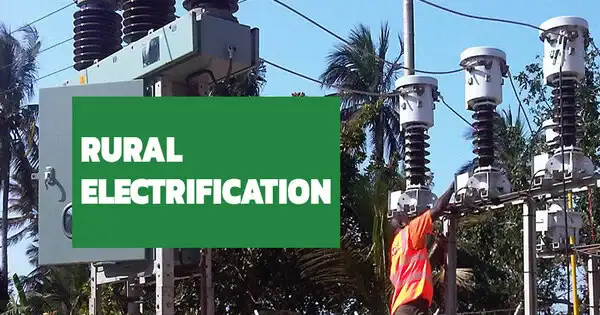Rural electrification is the process of providing electricity to rural and isolated places that do not already have access to electricity. It is the process of distributing electricity to rural and isolated locations. Rural towns are experiencing massive market failures as national systems fail to meet their demand for electricity. This is an important part of development since availability to electricity permits a variety of socioeconomic activities, raises living standards, and improves the quality of life in rural areas. As of 2019, 770 million people, or 10.2% of the global population, do not have access to electricity.
Electrification typically begins in cities and towns and gradually extends to rural areas, however, this process often runs into obstacles in developing nations. Expanding the national grid is expensive and countries consistently lack the capital to grow their current infrastructure.
Importance
Access to electricity is critical for many elements of rural living, such as lighting dwellings, powering appliances, operating agricultural equipment, allowing communication, and supporting companies. It can also improve healthcare services by permitting the use of medical equipment for vaccines and pharmaceutical refrigeration.
Challenges
Rural electrification has numerous problems, including the expensive expense of expanding electricity lines to rural areas, low population density resulting in insufficient demand, geographical hurdles such as rough terrain, a lack of infrastructure, and, in certain cases, political or social barriers.
Approaches
- Extension of Power Grids: In some cases, rural areas are connected to the main power grid through the extension of power lines. However, this can be expensive and may not always be feasible for remote areas.
- Off-Grid Solutions: In areas where grid extension is not feasible, off-grid solutions such as solar power, wind power, micro-hydro power, and biomass power are employed. These systems can be implemented at a smaller scale and tailored to the specific needs of the community.
- Mini-Grids: Mini-grids are localized electrical generation and distribution systems that serve a small number of users. They can be more cost-effective than extending the main grid to remote areas and can utilize a mix of renewable energy sources.
- Public-Private Partnerships (PPPs): Collaboration between governments, private sector entities, and NGOs can help overcome financial, technical, and institutional barriers to rural electrification.
Government Initiatives
Many countries and international organizations have undertaken projects and programs to encourage rural electrification, with a particular emphasis on sustainable and renewable energy sources. Additionally, amortizing capital costs to minimize the unit cost of each hook-up is more difficult in sparsely inhabited areas (resulting in a higher per capita share of the expense). If governments can overcome these challenges and achieve nationwide electrification, rural areas will benefit significantly from economic and social development.
Overall, rural electrification is critical for closing the urban-rural divide, supporting equitable development, and enhancing the well-being of rural communities.
















